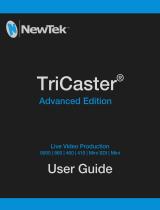
Using BOSS TONE STUDIO for Pocket GT
6
Importing Video from YouTube
By registering a YouTube video in the session list, you can enjoy performing
while the video plays.
* Depending on the video, importing might not be possible due to
restrictions on embedding.
1. Use a YouTube on your browser to access the video that
you want to import.
2. Press the [Share] button to copy the shortened URL.
3. In TONE STUDIO, click the [+] button located in the upper
part of the session list.
4. Paste or input the URL that you copied into the “URL
(paste)” eld.
Press the [V] key while holding down the [Ctrl] key if you’re on
Windows or the [Command] key if you’re on Mac.
5. Click the “NAME” eld, and enter a name for the video.
MEMO
Depending on the video, the name of the video might be input
automatically when you click the “NAME” eld.
6. Click the “OK” button to import the video.
Sound Number “S*”
Sounds of an imported SESSION le or sound numbers of content that was
downloaded from BOSS TONE CENTRAL are indicated as “S*.”
MEMO
5 If a sound “S*” is selected, it is shown as “
oo.
” on the Pocket GT.
5 Loading of S6 and subsequent sounds will be slower than S1–S5
sounds.
5 “S*” sounds are saved in the SESSION le.
5 If you want to use a “S*” sound in another song etc., save it to the
unit.
1. Click the marker, and select the “S*” sound that you want to
save.
The sound “S*” is now selected. This is not reected in the user
memory list.
2. In the EDITOR screen, tap the “WRITE” button and then select
“WRITE.”
3. Select the save-destination user memory number.
4. Click the [WRITE] button.
Specifying the Sound at a Marker
Registering a sound at a marker
1. In the session marker list, click the marker that you want to
assign.
2. Select the sound that you want to register at the marker,
either by clicking it in the user memory list, or by selecting
it on the Pocket GT unit.
3. Click the [MEMORY SET] button to register the user
memory.
Editing a registered sound
1. In the session marker list, select the marker in which a
sound is registered, and then click the [ ] button.
2. From the pulldown menu, click “DETAIL.”
3. Click the “MEMORY NUMBER” item, and select the user
memory that you want to register.
If you select “OFF,” the user memory registration is deleted.
4. If you want to edit the marker’s time location or name, click
“TIME” or “NAME” and edit them.
5. Click “OK” to register the user memory.



















